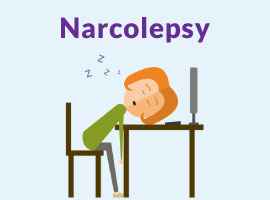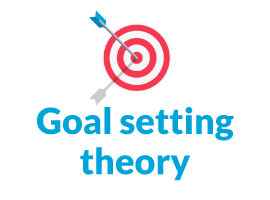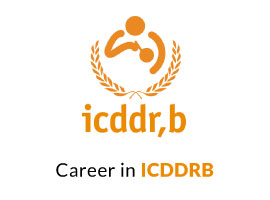Parasomnia refers to a group of sleep disorders characterized by abnormal behaviors, movements, emotions, perceptions, or physiological activities that occur during sleep or during the transition between sleep stages. These behaviors and activities are typically outside the normal range of sleep-related experiences and can disrupt a person's sleep patterns and quality of life. Parasomnias can occur during any stage of sleep, including non-REM (rapid eye movement) sleep and REM sleep.
Parasomnia symptoms
Here are some common parasomnia symptoms and examples of specific parasomnias:
1. Sleepwalking (Somnambulism): Individuals with sleepwalking may get out of bed and walk around while still asleep. They may also perform other activities like talking, eating, or even driving without being fully conscious.
2. Nightmares: These are vivid and frightening dreams that can wake a person from sleep. Nightmares can be accompanied by intense emotions like fear, sadness, or anger.
3. Night Terrors (Sleep Terrors): Night terrors are episodes of intense fear and panic during sleep. The person may sit up in bed, scream, and appear terrified, but they are usually unresponsive and do not remember the episode upon waking.
4. Sleep Talking (Somniloquy): Sleep talking involves speaking during sleep, which can range from simple, incoherent mumbling to coherent conversations. The content of the speech can be random or connected to ongoing dreams.
5. REM Sleep Behavior Disorder (RBD): In RBD, individuals physically act out their dreams during REM (rapid eye movement) sleep. This can involve movements, punching, kicking, or even violent behaviors.
6. Sleep-related Eating Disorder (SRED): People with SRED consume food while asleep, often without any memory of doing so. This can lead to unusual eating behaviors and potentially weight gain.
7. Sleep-Related Sexual Behaviors (Sexsomnia): Sexsomnia involves sexual behaviors or activities that occur during sleep, such as fondling, masturbation, or sexual intercourse, without the person being aware of it.
8. Exploding Head Syndrome: This is a parasomnia where individuals experience loud, imaginary noises, such as explosions or crashes, as they are falling asleep or waking up.
9. Sleep Paralysis: Sleep paralysis is a temporary inability to move or speak when falling asleep or waking up. It can be accompanied by vivid hallucinations and a sense of impending danger.
10. Confusional Arousal: Individuals with this parasomnia experience confusion, disorientation, and impaired cognition when waking up from sleep. They may not recognize their surroundings or be able to respond appropriately.
It's important to note that parasomnias can vary in severity and frequency. Some may be more common in children and tend to resolve as they age, while others can persist into adulthood. If you or someone you know is experiencing parasomnia symptoms that are causing distress or disruption to daily life, it's advisable to consult a healthcare professional or a sleep specialist for evaluation and management. Treatment options may include lifestyle changes, medication, or cognitive-behavioral therapy for sleep.
Parasomnia causes
Parasomnias can have various causes, which can include:
1. Genetics: Some parasomnias may have a genetic component, meaning they run in families. Certain individuals may be more predisposed to parasomnias due to their genetic makeup.
2. Brain Abnormalities: Irregularities in the structure or functioning of the brain can lead to parasomnias. This may include problems with the sleep-wake cycle, neurotransmitters, or other brain-related factors.
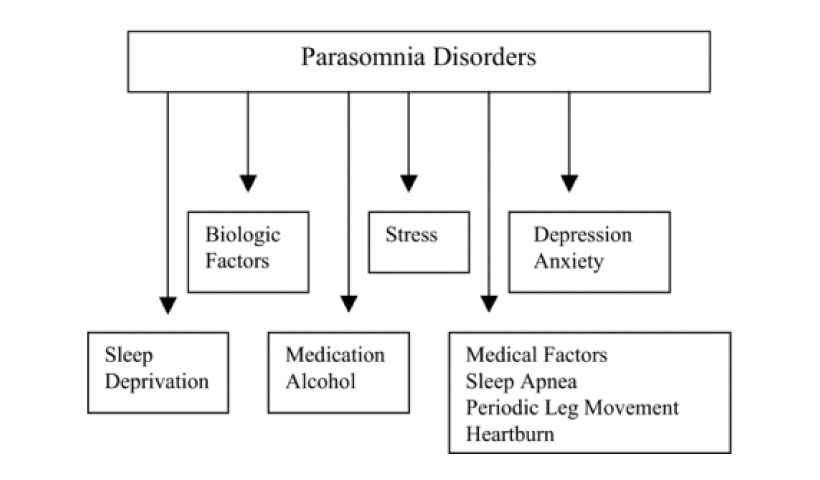
3. Medical Conditions: Underlying medical conditions can contribute to parasomnias. Conditions such as epilepsy, sleep disorders like sleep apnea, and neurological disorders can be associated with parasomnias.
4. Medications and Substance Use: Some medications, especially those that affect the central nervous system, can trigger parasomnias as a side effect. Additionally, the use of alcohol, recreational drugs, or certain prescription medications can increase the likelihood of parasomnias.
5. Stress and Anxiety: High levels of stress or anxiety can disrupt sleep patterns and contribute to parasomnias. Stress-related parasomnias may include sleepwalking or night terrors.
6. Sleep Deprivation: Lack of sufficient sleep or irregular sleep patterns can increase the risk of parasomnias. Sleep deprivation can disrupt the normal sleep cycle, making parasomnias more likely to occur.
7. Age: Some parasomnias, like night terrors and sleepwalking, are more common in children and tend to decrease with age. However, they can persist or develop in adulthood as well.
8. Hormonal Changes: Hormonal fluctuations, such as those that occur during pregnancy or menopause, can sometimes trigger or exacerbate parasomnias.
9. Environmental Factors: Unfamiliar or uncomfortable sleeping environments, excessive noise, or disruptions in sleep routines can contribute to parasomnias.
10. Psychiatric Disorders: Certain mental health conditions, such as bipolar disorder or post-traumatic stress disorder (PTSD), can be associated with parasomnias.
It's important to note that the specific cause of a parasomnia can vary depending on the type of parasomnia. There are different types of parasomnias, including sleepwalking (somnambulism), night terrors, sleep talking, sleep-related eating disorder, and more. Treatment and management of parasomnias often involve identifying and addressing the underlying cause, which may require consultation with a healthcare professional or sleep specialist.
Is parasomnia dangerous?
Parasomnia refers to a group of sleep disorders characterized by abnormal behaviors, movements, emotions, perceptions, and dreams that occur during sleep. Whether parasomnia is dangerous or not depends on the specific type of parasomnia and the severity of the symptoms. Here are some common types of parasomnia and their potential dangers:
1. Sleepwalking (Somnambulism): Sleepwalking can be potentially dangerous because individuals who are sleepwalking may be unaware of their surroundings and engage in activities that could result in injury. They might walk into walls, fall down stairs, or even leave the house and wander into unsafe areas.
2. Night Terrors: Night terrors are intense episodes of fear or agitation during sleep. While they are distressing for both the individual experiencing them and any observers, they typically don't result in physical harm. However, individuals with night terrors may thrash around in bed, which could lead to injury.
3. REM Sleep Behavior Disorder (RBD): RBD involves acting out vivid dreams during REM (rapid eye movement) sleep. These actions can be aggressive and violent, potentially leading to harm to the individual or their sleep partner.
4. Sleep Talking: Sleep talking is generally harmless, but it can be disruptive to sleep partners.
5. Sleep-related eating disorder: People with this condition eat during sleep without being aware of it. While it may not be immediately dangerous, it can lead to health problems if individuals consume unhealthy or excessive amounts of food during these episodes.
6. Sexsomnia: Sexsomnia involves engaging in sexual behaviors during sleep. This can be potentially dangerous or distressing for both the affected individual and their partner.
7. Exploding Head Syndrome: This parasomnia involves hearing loud noises, such as explosions or crashes, while falling asleep or waking up. While it's not physically dangerous, it can be frightening.
It's essential to differentiate between the various types of parasomnia and their potential risks. If you or someone you know is experiencing parasomnia and it is causing distress or posing a risk, it is advisable to seek medical evaluation and treatment. A healthcare professional can help diagnose the specific type of parasomnia and recommend appropriate interventions, which may include lifestyle changes, medication, or therapy, depending on the condition's severity.
Parasomnia vs dyssomnia
Parasomnia and dyssomnia are two categories of sleep disorders that affect a person's sleep patterns and quality. They differ in terms of the specific symptoms and underlying causes:
1. Parasomnia:
Parasomnia refers to a group of sleep disorders characterized by abnormal behaviors, movements, or experiences that occur during sleep. These behaviors and experiences are typically unwanted and disruptive to sleep.
Examples of parasomnias include:
Sleepwalking (somnambulism): Walking or performing other activities while asleep.
Nightmares: Disturbing and vivid dreams that can cause arousal and distress.
Night terrors (sleep terrors): Episodes of intense fear or panic during sleep, often accompanied by screaming and rapid heart rate.
REM sleep behavior disorder (RBD): Acting out dreams physically during REM (rapid eye movement) sleep, which is normally associated with muscle atonia (paralysis).
Sleep-related eating disorder (SRED): Consuming food while asleep, often in an uncontrolled manner.
Sexsomnia: Engaging in sexual behaviors during sleep without conscious awareness.
Parasomnias are generally associated with disruptions in the sleep cycle and can occur during various stages of sleep.
2. Dyssomnia:
Dyssomnia, on the other hand, refers to a category of sleep disorders characterized by difficulties with the timing, quality, and amount of sleep. These disorders typically involve issues with falling asleep, staying asleep, or experiencing restorative sleep.
Examples of dyssomnias include:
Insomnia: Difficulty falling asleep or staying asleep, or waking up too early and not being able to go back to sleep, which leads to daytime impairment.
Sleep apnea: Interruptions in breathing during sleep, leading to frequent awakenings and disrupted sleep patterns.
Restless legs syndrome (RLS): Uncomfortable sensations in the legs, often accompanied by an irresistible urge to move them, which can disrupt sleep.
Circadian rhythm sleep disorders: Disruptions in the body's natural sleep-wake cycle, leading to problems with the timing of sleep.
Hypersomnia: Excessive daytime sleepiness or prolonged nighttime sleep.
Dyssomnias primarily affect the quantity and quality of sleep and are typically related to issues with the sleep-wake cycle or the physiological processes involved in sleep regulation.
In summary, parasomnias involve abnormal behaviors or experiences during sleep, while dyssomnias are characterized by difficulties with the timing, quality, and amount of sleep. Both types of sleep disorders can significantly impact a person's overall well-being and should be evaluated and treated by healthcare professionals when necessary.
Parasomnia examples
Parasomnia refers to a category of sleep disorders that involve abnormal behaviors, movements, emotions, perceptions, and dreams that occur during sleep. These behaviors are often involuntary and can range from mild to severe.
Here are some examples of parasomnias:
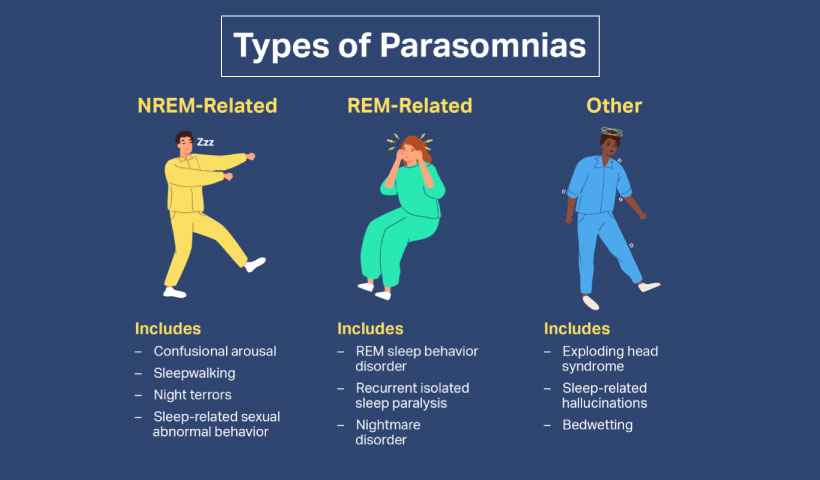
1. Sleepwalking (Somnambulism): Sleepwalkers get out of bed and may walk around their environment while still asleep. They may engage in various activities without any recollection of it later.
2. Sleep Talking (Somniloquy): Sleep talking involves speaking during sleep without being aware of it. The content of sleep talk can be incoherent or even involve full conversations.
3. Night Terrors (Sleep Terrors): Night terrors are episodes of intense fear, screaming, and a sense of panic during sleep. The person often appears confused and may not remember the episode upon awakening.
4. Nightmares: Nightmares are vivid and distressing dreams that can awaken a person from sleep. Unlike night terrors, individuals usually remember the content of nightmares.
5. Bedwetting (Nocturnal Enuresis): Bedwetting involves involuntary urination during sleep, particularly in children. It can also occur in adults, often due to underlying medical conditions.
6. REM Sleep Behavior Disorder (RBD): In RBD, individuals physically act out their dreams during REM (rapid eye movement) sleep, which can lead to injuries or disrupted sleep for the person and their sleep partner.
7. Sleep-related Eating Disorder (SRED): People with SRED consume food during sleep, often in a semi-conscious state. This can lead to overeating, choking hazards, and weight gain.
8. Sleep-related Sexual Behaviors (Sexsomnia): Sexsomnia involves engaging in sexual behaviors during sleep, such as fondling, masturbating, or even sexual assault, without conscious awareness.
9. Exploding Head Syndrome (EHS): EHS is characterized by sudden loud noises or sensations, often described as an explosion or a gunshot, occurring just before falling asleep or upon waking.
10. Sleep Paralysis: During sleep paralysis, a person experiences temporary paralysis, usually when falling asleep or waking up. They may also have hallucinations or a sense of pressure on their chest.
11. Sleep Bruxism (Teeth Grinding): Sleep bruxism is characterized by the grinding or clenching of teeth during sleep. It can lead to dental problems and jaw pain.
12. Confusional Arousals: Confusional arousals involve a person waking up in a state of confusion, disorientation, or even agitation. They may not be fully aware of their surroundings.
13. Sleep-related Hallucinations: These are vivid sensory experiences (visual, auditory, or tactile) that occur when falling asleep or waking up. They can be unsettling or frightening.
It's important to note that some parasomnias can be associated with underlying medical or psychiatric conditions and may require evaluation and treatment by a healthcare professional. If you or someone you know is experiencing frequent or severe parasomnias, it's advisable to seek medical advice to determine the underlying cause and explore appropriate management options.
Parasomnia Treatment
The treatment of parasomnia depends on the specific type and severity of the disorder. Parasomnias are a group of sleep disorders characterized by abnormal behaviors or experiences during sleep. Some common types of parasomnias include sleepwalking, night terrors, sleep talking, and REM sleep behavior disorder (RBD). Here are some general approaches to treating parasomnia:
Education and Lifestyle Modifications:
Educate the individual and their family about parasomnias to reduce anxiety and better understand the disorder.
Ensure a consistent sleep schedule, with adequate and regular sleep, as sleep deprivation can trigger some parasomnias.
Create a safe sleep environment by removing obstacles and hazards from the bedroom.
Cognitive-Behavioral Therapy (CBT):
CBT can be beneficial for some individuals with parasomnias, especially for disorders like sleepwalking or night terrors.
CBT techniques aim to modify behaviors, reduce anxiety, and improve sleep hygiene.
Medications:
In some cases, a healthcare provider may prescribe medication to manage parasomnias, especially when they are severe or disruptive.
Medications like benzodiazepines, tricyclic antidepressants, or selective serotonin reuptake inhibitors (SSRIs) may be used, depending on the specific parasomnia and its underlying causes.
Scheduled Awakenings:
This technique involves briefly waking the individual just before the typical occurrence of a parasomnia episode to disrupt the sleep cycle. Scheduled awakenings can be useful for managing disorders like night terrors.
Relaxation and Stress Reduction Techniques:
Stress and anxiety can exacerbate some parasomnias. Learning relaxation techniques such as mindfulness, deep breathing exercises, or progressive muscle relaxation may help.
Continuous Positive Airway Pressure (CPAP) Therapy:
CPAP is primarily used to treat sleep apnea, but it can also be helpful for individuals with parasomnias that are linked to sleep-disordered breathing.
Treating Underlying Medical or Mental Health Conditions:
Addressing underlying medical conditions, such as sleep apnea or restless leg syndrome, can sometimes alleviate parasomnia symptoms.
If the parasomnia is associated with mental health conditions like anxiety or depression, treating the underlying mental health issue may also help.
It's crucial to consult with a healthcare professional, preferably a sleep specialist, for a proper diagnosis and personalized treatment plan tailored to the specific parasomnia. Treatment may involve a combination of these approaches, and the effectiveness of each method can vary from person to person. Additionally, some parasomnias may naturally resolve over time, especially in children.

